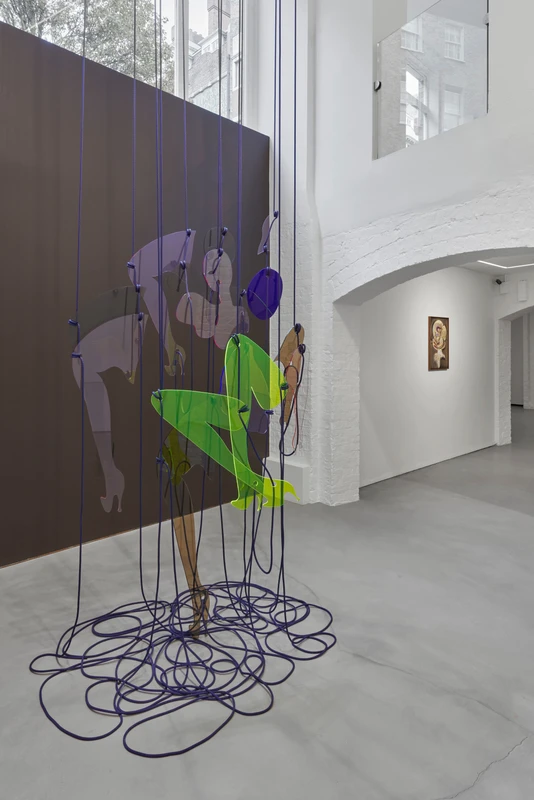Vicky Wright: A Single Stem
24 Nov 2022-14 Jan 2023
PV 24 Nov 2022, 6-8pm


In her poem The Wild Iris, Louise Glück tells us the story of life, death and rebirth from the perspective of a flower. As we experience the trauma of its atrophy, we are also rewarded with regenesis. It is a journey through the mire, towards accession.
It is this process of self-actualisation which Vicky Wright channels in her latest series of paintings. Referencing an iconic floral pattern by William Morris, A Single Stem reflects on how proverbial identities are forged and manufactured, and how these persist in popular imagination. Figures grow amorphously, absorbing the nutrients from the ground, tempered by their own micro-climate; cross-pollinating forms which are then re-seeded through the air. Wright’s fragmented constructions of archetypal figures draw on historical narrative, current affairs, natural phenomenon and imagined happenings, and we traverse the vicissitude of seasons to where new life forms emerge.
Wright’s investigations into identity politics, class structure and performativity are here relocated within the current landscape of a nation adrift, foggy headed and vulnerable. In her latest exploration of portraiture as a socio-political mechanism, Wright adopts the position of the sitter – an act of self-evisceration to explore complex new horizons, but also an endeavor of catharsis. Through subverting portraiture’s process of enshrinement, Wright tussles with its counterpart – metamorphosis – as both a productive and harmful force. Each portrait performs an act of transmutation, absorbing heroes, demons, and other organisms, emerging as a series of phantasmagorical characters. Marilyn Monroe’s hair collides with the reassembled parts of populist politicians, Mussolini’s shadow attaches itself to another protagonist with Peter Pan-esque ventriloquism. With these visual cues, Wright references the mechanisms of political ascendency, whereby idiosyncratic kleptomania functions to mediate the populus and expedite power, at the cost of an authentic self. Materiality here plays a significant role. Wright submits to the painting process as a kind of hypnosis, exploiting build-up and erasure to convey both incidental and architected aspects of characterisation. Using trompe-l’œil extends the reference to verisimilitude, while rendering on wooden board stained in rich, subdued browns act as a tongue-in-cheek reference to opulent English manor houses, becoming – literally – part of the furniture.
Nature forms a touchstone within the body of work, both in its representations of regeneration and its relationship to societal cultivation. Conceived in large part during a period of the Covid-19 pandemic, Wright observed the sanctity provided by the British countryside garden, the engineered green space, in all its horticultural pomposity. Here, the British garden nurtures its own ideological cast of privileged and fetishised abundance – a new kind of symbiosis. Continually revisiting the pervasiveness of class and socio-economic borders in her work, Wright draws on the inanity and absurdity witnessed in these siloed societies throughout her characterisations.
Placed in dialogue with the portrait series, two new sculptural works echo the juxtaposing forces of movement versus stasis, or self-creation versus impotence, which encapsulate Wright’s current fascination. Pushing her work beyond the confines of the pictorial frame, these amalgam figures-cum-portraits comprise dismembered limbs and body parts, each of which hang suspended in space, tethered by ropes as if marionettes. Encountered directly in profile, we see a cohesive form, but as our gaze shifts the form obliterates. Recalling Lacanian jouissance, the figure splits and divides itself as if uncontainable, fuelled by a desire to go beyond.
Through Wright’s storytelling we are compelled to examine the murky space of the in-between, the factions of character which have the potential to both elevate and unravel us. These fables act to warn us of false idols but also signal to reawakenings. In times where new, unfettered fields are being plowed at rapid pace, Wright dislodges the instruments of power and offers us a reassuring toolkit for resistance.